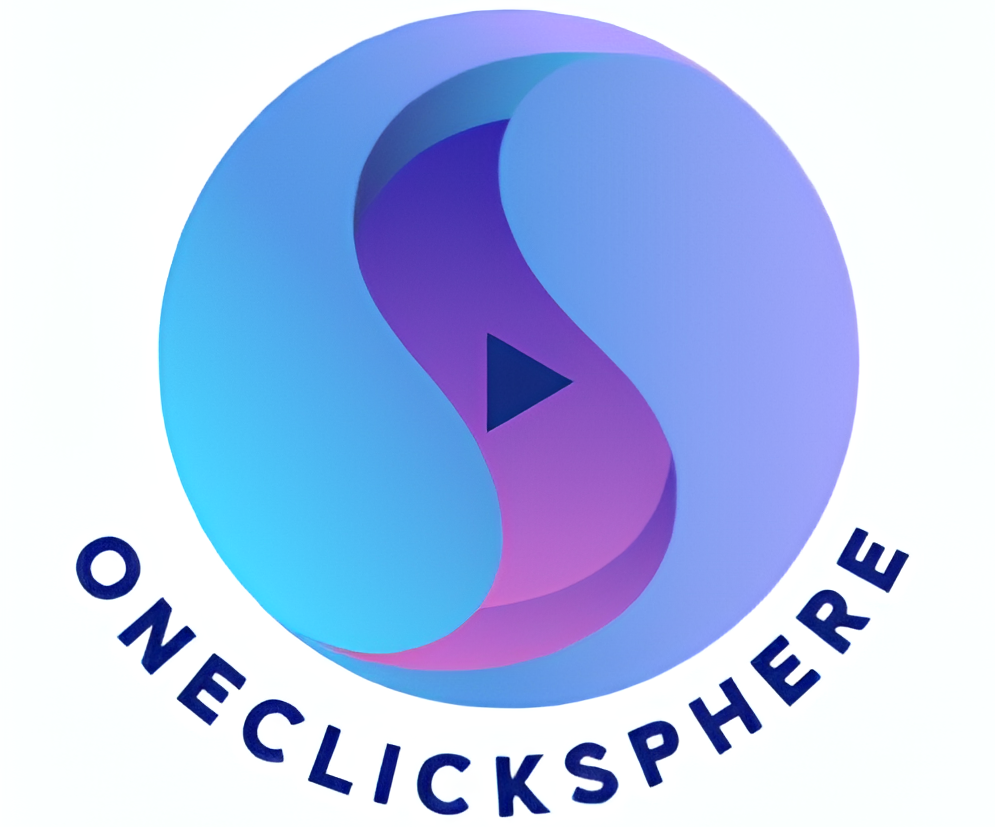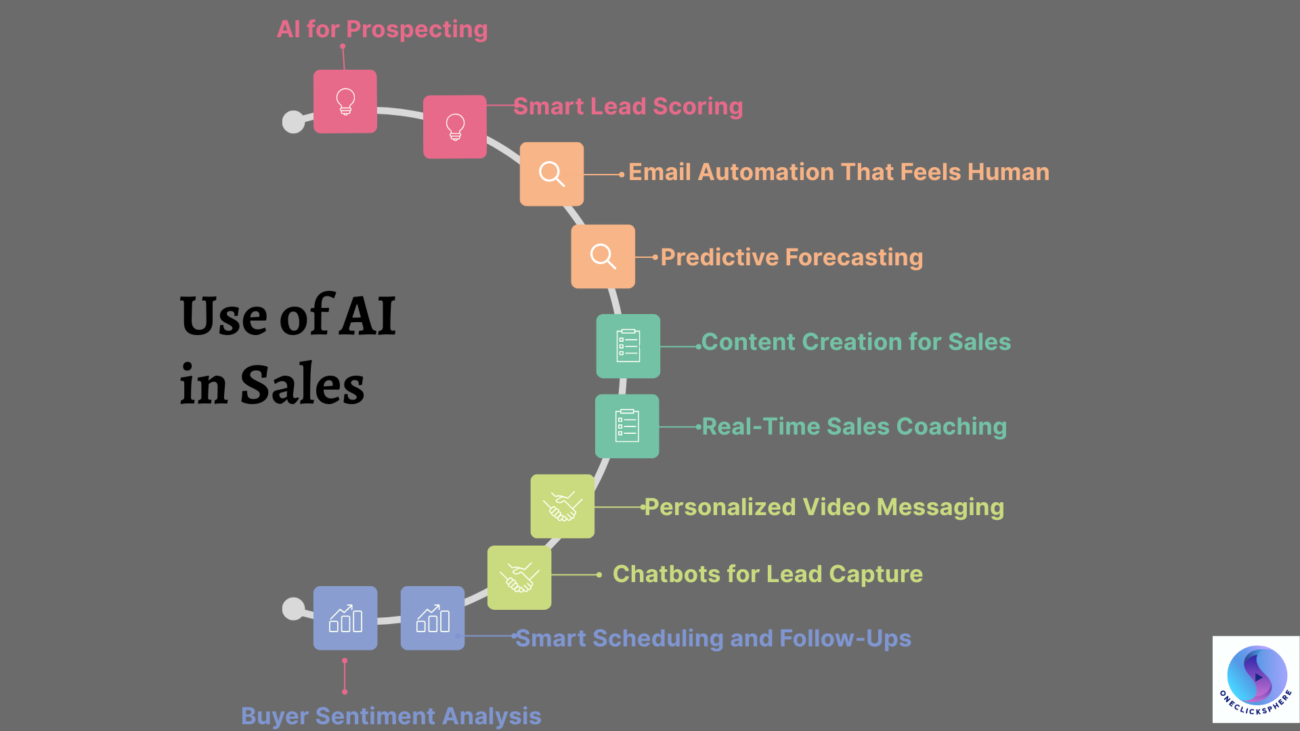Sales isn’t what it used to be. In 2025, buyers are smarter, faster, and expect more from every touchpoint. Traditional sales tactics? They’re not enough. That’s where AI in sales comes in. Imagine a world where your outreach is always personal. Where do you know which lead to call next? Where follow-ups happen automatically. That’s not the future. That’s now. Sales and marketing teams are using AI to drive results, and the ones who ignore it are being left behind. This article explores how to use AI in sales, what tools to watch, and real AI in sales examples that work. Whether you’re prospecting, closing deals, or training reps, there’s something here for you.
What Is AI in Sales and Why It Matters?
AI, or artificial intelligence, refers to machines that learn and improve from data. In sales, that means software that helps reps find leads, write emails, handle objections, and more.
Where AI Fits in the Sales Process?
- Sales prospecting: AI finds and qualifies leads faster.
- Lead scoring: It ranks leads based on real-time behavior.
- Outreach: It writes and personalizes messages.
- Follow-ups: AI automates reminders and check-ins.
- Sales enablement: It builds custom scripts and playbooks.
This makes using AI in sales a no-brainer. It saves time, increases conversions, and lets reps focus on what they do best.
9 Real-World Uses of AI in Sales
Here’s how companies are actually using AI today:
AI for Prospecting
AI can scan thousands of online sources in seconds to find your ideal customers. It looks at job titles, industries, company size, and even social activity to match your perfect fit. Not only that, but it also fills in missing details like emails or company revenue. This means less time searching and more time selling.
Smart Lead Scoring
Not all leads are equal and AI knows that. Instead of you guessing which leads to chase, AI tracks behavior like email clicks, website visits, and engagement history. It scores leads in real time, so your sales team always knows who’s hot and who’s not. That means fewer wasted calls and faster wins.
Email Automation That Feels Human
AI tools like Lavender can now write emails that feel personal. They analyze your prospect’s tone, job title, and interests to craft a message they’ll want to open. No more generic templates. This boosts your open and reply rates without burning hours writing from scratch.
Predictive Forecasting
AI sees patterns that humans can’t. It tracks deal size, sales stage, engagement, and more to predict what’s likely to close and when. This gives sales managers better planning power, fewer surprises, and smarter revenue strategies. It’s like having a data analyst on your team, 24/7.
Content Creation for Sales
Creating the right message for the right buyer is hard. Generative AI tools like Regie.ai create sales scripts, email sequences, and even social posts based on your product and target persona. Whether you need content for top-of-funnel or closing stages, AI makes it fast and relevant.
Real-Time Sales Coaching
AI listens to your sales calls and gives instant feedback. If a buyer raises an objection, it can suggest responses while you’re still on the call. It even highlights missed opportunities or filler words you use too often. This helps new reps ramp faster and experienced reps improve with every conversation.
Personalized Video Messaging
Generative AI can now create video messages that say the buyer’s name and show their company info or use-case. These videos grab attention and feel customized without you filming each one. Perfect for outreach, demos, or follow-ups.
Chatbots for Lead Capture
AI-powered chatbots work 24/7 on your site. They ask the right questions, answer simple ones, and pass the warm leads straight to your team. Some tools even qualify leads by asking things like budget and timeline. You get more leads, and your buyers get instant replies.
Smart Scheduling and Follow-Ups
Forget back-and-forth emails to set meetings. AI bots can check calendars, send invites, and even send reminders. After the meeting, they follow up with notes or action items without reps needing to remember. That saves time and keeps deals moving.
Buyer Sentiment Analysis
During calls, AI can read a buyer’s tone and language to figure out if they’re interested, bored, or unsure. This helps sales reps adjust their pitch or ask better questions. It’s like having a second set of ears that picks up on the things you might miss.
5 Generative AI Trends Shaping Sales in 2025
New developments in generative AI in sales are changing how teams sell:
1. Voice-Based AI Sales Assistants
AI can now talk. Voice bots make calls, answer questions, and even qualify leads.
2. Multi-Modal AI (Text + Visuals)
AI can create entire pitch decks, case studies, and product visuals—just from a prompt.
3. Real-Time Call Summarization
AI takes notes and writes summaries during sales calls, saving reps hours.
4. Human-AI Collaboration
AI does the busy work. Humans focus on connection, strategy, and relationship-building.
5. Ethics and Transparency
Top companies now disclose how they use AI to keep trust with buyers. Ethical use of AI in marketing and sales is key.
How to Start Using AI in Sales?
Want to bring AI into your workflow? Follow these steps:
1. Audit Your Current Sales Stack
Start by listing every tool you currently use-CRM, email platform, calling software, and more. Then ask your team: Which tools help? Which ones slow you down? This step shows you where time is being wasted. Look at costs too. You may be paying for tools that AI can replace or improve. This audit creates a clear picture of your current setup and where AI fits in.
2. Identify Integration Opportunities
Next, find one process that AI can handle better or faster. Maybe it’s email writing. Maybe it’s lead scoring. Choose one that costs time or creates friction. Don’t try to automate everything at once. Start small and get quick wins. For example, replace manual scheduling with an AI assistant. Or use an email assistant to personalize outbound at scale.
3. Train Your Team
AI only works if your team uses it. Set time aside for short training sessions. Show reps how to use AI tools with real examples. Help them build trust in the tech. Highlight how it saves time, not takes jobs. Celebrate small wins when someone books a meeting or closes a deal using AI. Peer success stories help build confidence.
4. Run a Pilot
Choose one team, one region, or one use case. Roll out the AI tool there first. Monitor performance before scaling. Track metrics like meeting booked, email response rate, or time saved. Gather feedback weekly. What’s working? What’s not? Adjust settings or retrain as needed. This pilot approach reduces risk and improves results.
5. Set Clear KPIs
Before full rollout, define what success looks like. Choose simple, measurable KPIs like:
- Response time to new leads
- Conversion rate per channel
- Deal velocity (time from first touch to close)
- Number of qualified leads per week
- Time saved per rep Use these to track performance and prove ROI. Data helps justify broader adoption.
Top AI Sales Tools to Watch in 2025
Here are the top tools that are leading the AI sales automation space:
- Salesforce Einstein GPT – AI inside your CRM to write summaries and next steps.
- Microsoft Copilot for Sales – AI built into Teams, Outlook, and Dynamics.
- Regie.ai – Generates custom content and sales sequences.
- Nooks AI – An autonomous SDR that calls, books, and follows up.
- Lavender – Optimizes emails for tone and clarity.
- Humantic AI – Reveals buyer personality traits to improve communication.
- Attention – A real-time AI co-pilot that coaches reps on live calls.
Benefits of AI in Sales
What do you gain from using AI?
- Shorter Sales Cycles – AI speeds up outreach, follow-ups, and decision-making.
- Higher Lead Quality – Intelligent scoring helps you focus on the best leads.
- Personalized Buyer Journeys – At scale, with less manual work.
- Less Repetition – AI handles admin work so reps can sell.
- Smarter Insights – AI surfaces trends and buyer behavior from your data.
If you’re asking, “how can I use AI in sales?”—these benefits are your answer.
Overcoming Challenges of AI Adoption
Yes, AI has some downsides, but smart planning can solve most of them. Data privacy is a big concern, so it’s important to use secure tools that follow GDPR and other privacy rules. Some team members may resist using AI at first, but this can change if they understand how it helps, not hurts. Let them see AI as a teammate, not a threat. Also, AI is only as good as the data you give it. That means you need to keep your data clean, complete, and up to date. One more thing—AI should never replace the human touch. Use it to help with tasks, but not for everything. And while AI gives great suggestions, final decisions should always come from people, not machines.
7 Creative AI Use Cases You Haven’t Tried Yet
Want to get ahead? Try these experimental ideas:
- Predict Churn in Key Accounts – AI flags unhappy high-value clients before they leave.
- Pitch Coaching from Transcripts – Real-time tips during practice calls.
- Dynamic Battle Cards – Updated in real-time using competitor data.
- Sales Avatars for Training – Reps practice with lifelike AI buyers.
- Sentiment-Based Proposal Edits – Adjusts tone based on buyer reactions.
- AI Price Tracking – Watch competitors and adjust offers in real time.
- Gamified AI Sales Training – Reps earn points and rewards for using AI tools well.
Will AI Replace Salespeople?
AI will not replace salespeople anytime soon, but it is changing how they work. Think of AI as your assistant. It can do research, write summaries, and even draft emails, but it can’t create strategy or build real trust. That part still belongs to you. Human connection is something AI can’t fake, and empathy is what closes deals. The best salespeople today are learning how to work with AI, not against it. They know how to ask the right prompts, read AI-generated data, and coach their tools to be more useful. AI isn’t here to take your job, it’s here to make it better.
Final Thoughts:
You don’t need to be a tech expert to start with AI. Just start small, stay curious, and test tools that match your workflow. Sales AI automation isn’t about doing more work. It’s about doing better work. Reps who use AI will outsell those who don’t. Simple as that. Explore, test, and build your strategy. The sooner you start, the sooner you win.


One thought on “How can I use AI in sales?”